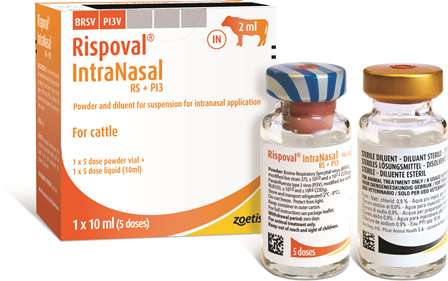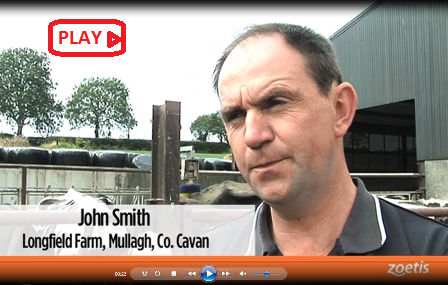Calf Pneumonia
Pneumonia in the young, pre-weaned dairy heifer calf can have a long term impact on her overall lifetime productivity. The first 8 weeks (56 days) in the life of a dairy heifer are crucial, as growth rates, at this early stage, have long term effects on the ability of that animal to produce milk in the future. This is in part due to the development of the mammary tissue in the young calf, which is highly responsive to nutrient intake1. Anything that hinders nutrition and health in the young calf can have long term detrimental effects which contribute to a loss in production and farm profitability.
Good growth rates in young calves bode well for the future as, on average, for every additional 100g of average daily weight gain during the first 2 months of life, about 225kg of additional milk in the first lactation can be expected2. Recent Irish studies3 showed pneumonia in young, pre-weaned calves can reduce first lactation yield by 4% and second lactation yield by 8%. In animals that suffer pneumonia relapses, first and second lactation yields are reduced even further, by 5% and 10% respectively. Pneumonia in young calves has been shown to reduce growth rates by 3%-9% which cannot be overcome by compensatory feeding.
When dairy heifer growth targets are missed (due to ill health etc.) they are unlikely to be on target for breeding at 15 months of age and calving at 24 months of age. Heifer calves that develop pneumonia have a delayed age at first calving and are known not to last as long in the milking herd, with reduced days in milk over their lifetime compared with calves that never suffer from pneumonia.
According to the 2014 All Island Disease Surveillance report 47% of all respiratory disease diagnoses in Irish Veterianry labs were in calves less than 10 weeks of age, which indicates that these young calves are the animals that are most susceptible to pneumonia.
PNEUMONIA IN YOUNG DAIRY CALVES CAN RESULT IN:
-
An average cost of €53 per case at time of disease4 (Treatment costs, time etc.)
-
Increased age to first calving by 2 weeks5
-
Reduction in 1st lactation yield by 4%3
-
Reduction in 2nd lactation yield by 8%3
-
Reduction in the number of overall days in milk for individual animals by an average of 109 days6



